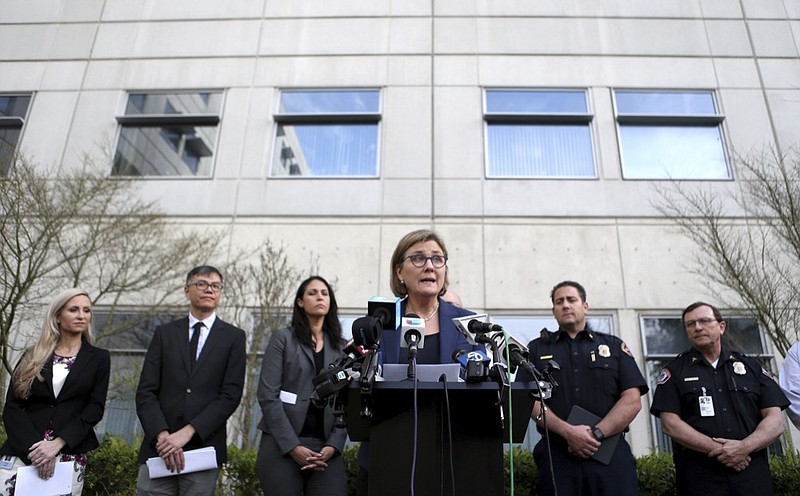As the chief health officer of Santa Clara County, California, Dr. Sara Cody announced the first case of coronavirus in the Bay Area in January. Last month, she led the rollout of the nation's first shelter-in-place order.
New York Times reporter Thomas Fuller talked with Cody about what lies ahead for California. Here's their conversation, lightly edited and condensed:
Q: A question about the future: Flattening the curve is a short-term solution. It slows down the first wave, the rate of infections and death, but it doesn't eradicate the disease by any means. What's the longer-term solution?
A: This is extraordinarily challenging. We look at the options before us, and none of them are particularly shining and bright -- none of the options looks great. We are trying to optimize and do the very best we can given the circumstances.
For example, we do not have widespread testing.
We don't yet have a widely available antibody test in order to be able to pair someone who is immune and put them out on the front line for all the essential work that needs to be done. We have a shortage of personal protective equipment. We need to be very careful about how we assess our supply, how we estimate what our demand and burn rate is going to be.
Q: Do I hear from you that it's been so difficult that you haven't had time to think about how to handle the next waves?
A: We are already thinking about that. But I'd be lying if I told you that we had exquisitely detailed plans.
There are phases. The very first phase was containment. That was when every single case we had, we absolutely went to the mat. We found every single contact we possibly could. Every case was quarantined under a strict legal order, every case was isolated under a strict legal order. We followed them carefully, their symptoms, visits, tests.
Then at some point the rocket ship takes off and you need to shift strategies. And that's when we moved to mitigation. That's when we started doing things like the first order to ban gatherings greater than 1,000, and then moving to gatherings greater than 100, and then finally to the first shelter-in-place order.
The idea is that we slow the train down for a couple reasons. The top-level reason is to preserve the capacity of the health care system to care for people who get sick. But the other is if we bend the curve and are able to reduce the case count then we can go back to more refined containment strategies and marry those with the mitigation.
Q: With more testing available, can the shelter-in-place orders be lifted and as soon as an outbreak is identified, a rush to contain it? Are you hoping that's what comes next?
A: That's exactly right. We started out with containment; we are now in very broad-based mitigation.
Eventually if we slow it down enough, when we put together more resources and the numbers are less than 1,000, then we could do some more of the individual case investigations, rapid isolation, and that would be another way to slow things down.
All of this we're doing while there's a race to develop a vaccine.
Q: But we don't know if a vaccine will come or not. We've had mixed results with previous coronaviruses.
A: That's right.
Q: There's this paradox that the better you are at managing the first wave of the virus, the more vulnerable you are to the second wave because you have so many people who are not immune. Is there a fear for the second wave, that the initial success will not lead to any permanent solution short of a vaccine?
A: My hope, and I'm generally an optimistic person, is that if we had just a few more tools at the ready we could focus our resources in a more precise way.
For example, if we had antibody tests, if we could stand on that, then we would do a much better job with health care workers.
And we would also be able to understand how much of our population is immune and how much of our population is susceptible. And we could fold that into a model and estimate what might happen in a second wave -- and plan.
